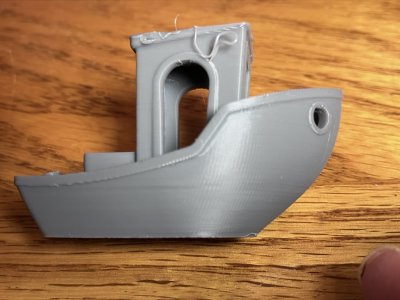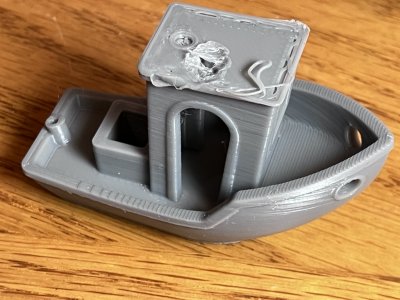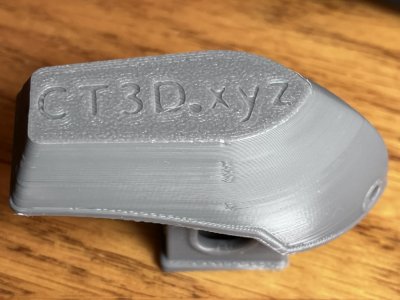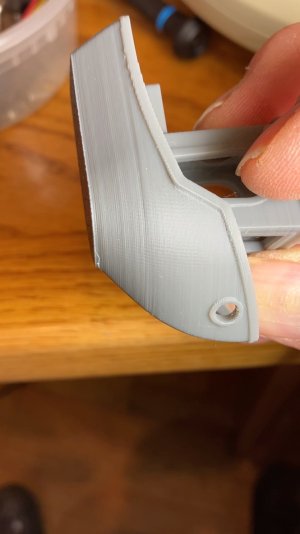ChrisA
Well-known member
I know about the tuning guide. I'll get around to that but just to start maybe someone knows what these defects are?
I just finished a V0.2 printer. The config is pure 100% stock from GitHub and I used the "Generic PLA" profile in Cura. This is the first part to come off the printer. I don't see any stringing and the round overhangs are all round. But notice some divots on one side of the hull. They are "stacked" and not random and they don't continue up the entire hull, also some horizontal lines and some very mild ringing. Then the worst defect, bed adhesion fails and the Benchy fell over.
I have no experience with textured beds like this. On my current, very old i# clone I use gluestick over bare aluminum. I've read that washing with soap and water can help.
Over all I'm happy but PLA is easy to print. My goal is to print functional robotic parts in glass-filled ABS or engineering-grade plastics.
I just finished a V0.2 printer. The config is pure 100% stock from GitHub and I used the "Generic PLA" profile in Cura. This is the first part to come off the printer. I don't see any stringing and the round overhangs are all round. But notice some divots on one side of the hull. They are "stacked" and not random and they don't continue up the entire hull, also some horizontal lines and some very mild ringing. Then the worst defect, bed adhesion fails and the Benchy fell over.
I have no experience with textured beds like this. On my current, very old i# clone I use gluestick over bare aluminum. I've read that washing with soap and water can help.
Over all I'm happy but PLA is easy to print. My goal is to print functional robotic parts in glass-filled ABS or engineering-grade plastics.





